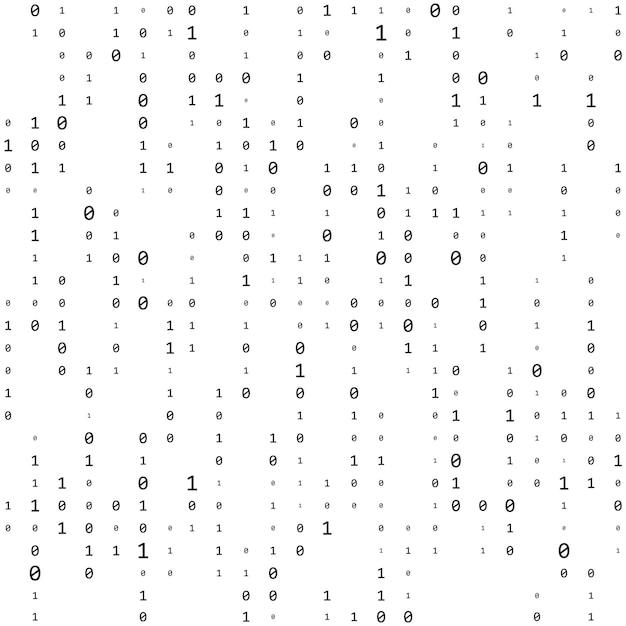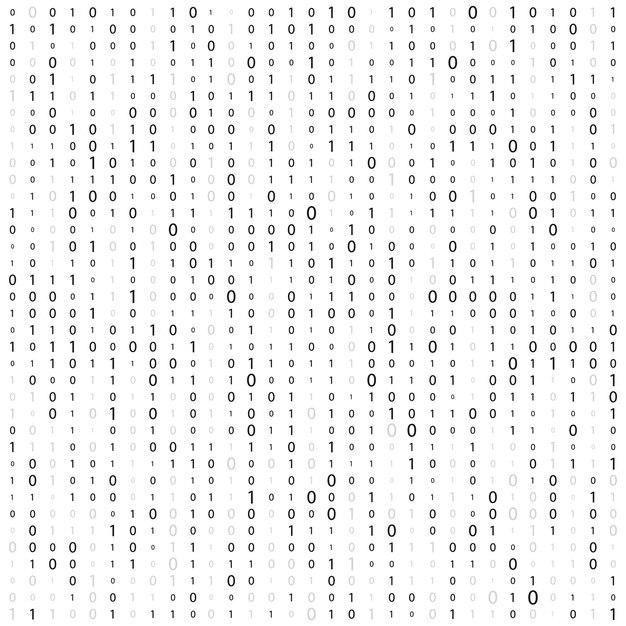Welcome to the intriguing realm of binary code! Have you ever wondered what those mysterious 0s and 1s actually mean? In this blog post, we will unfold the secrets behind this fundamental language of computers and delve into its origins, significance, and wide-ranging applications.
Binary code is a foundational concept at the heart of modern technology. It represents information using only two digits: 0 and 1. These digits, also known as bits, serve as the building blocks for all digital data processing. But what do these 0s and 1s symbolize, and why are they so crucial in the digital world?
Stay tuned as we venture into the intricate world of binary code, exploring its history, the different types of binary codes, and the reasons why computers rely on this system. By the end of this blog post, you’ll have a deeper understanding of why binary is not just a language for computers, but the bedrock of our digital existence.
So, let’s embark on this educational journey through binary code and discover its wonders together!

What do 0 and 1 Represent in Binary Code?
Binary code may seem like the secret language of computers, with its combinations of 0s and 1s. But fear not, dear reader! Today, we’re going to decode this enigmatic world and uncover the true meaning behind those humble digits. So, grab your thinking cap (or preferably a comfy hat) and let’s dive in!
The Binary Code: A Secret Language of Digits
In the mysterious realm of binary code, the values of 0 and 1 hold the key to unlocking the digital universe. Just like the countless combinations of letters form words and sentences, the sequences formed by these two digits create the complex languages of computers.
Let’s Start with 0: The Nothingness
Imagine the number zero as the void, the absence of anythingness. In binary code, it represents the absence of an electrical current. It’s the digital equivalent of an empty room or a blank canvas waiting to be filled with meaning.
Now, Let’s Switch to 1: The Spark of Existence
Ah, the number one! Our journey into the binary world begins with this tiny, mighty digit. In the realm of binary code, the number one represents the presence of an electrical current. It’s the starting point—the spark that ignites the digital fire.
Combining 0s and 1s: The Language of Computers
With just 0 and 1 at their disposal, computers encode and process information in ways that baffle the human mind. Each 0 and 1 represents a single binary digit, also known as a “bit.” It may not sound like much, but when combined, these bits become the building blocks of all digital data.
8, 16, 32, 64…Bits and Beyond!
As technology advanced, the number of bits increased, allowing computers to handle more complex tasks. The most common bit configurations you’ll encounter are 8-bit, 16-bit, 32-bit, and 64-bit systems. These numbers signify the length of the binary sequences that the computer can process in one go. The higher the number of bits, the greater the computational power and capacity.
Binary Code: Behind the Scenes of Everything Digital
From text to images, videos to sound, binary code is the cornerstone of all digital content. Each letter you’re reading right now, each pixel on your screen, they all have their place in the binary universe. So the next time you’re browsing the web or streaming your favorite show, remember that it’s all thanks to the intricate dance of 0s and 1s.
Embrace the Binary Brilliance
Now that you’ve delved into the world of binary code, you have a newfound appreciation for the magic these humble digits create. Whether it’s the simplicity of 0 or the power of 1, they come together to form the backbone of our digital existence. So, let’s raise a virtual toast to the 0s and 1s that make our digital world go round!
And there you have it, the true significance of 0 and 1 in the vast realm of binary code. These seemingly ordinary digits weave together to create the intricate fabric of our digital lives. So, the next time you see a string of 0s and 1s, you’ll know there’s more to it than meets the eye. Stay curious and keep exploring the wonders of the binary world!

FAQ: What does the 0 and 1 represent in binary code?
Welcome to our comprehensive FAQ guide on the intriguing world of binary code! In this section, we’ll unravel the mysteries of those familiar 0’s and 1’s, explore the origins of binary code, and understand why it is so important in the realm of computing. So, let’s dive right in and answer some burning questions!
What do 0 and 1 represent in binary code
In binary code, the 0 and 1 represent the two fundamental states that computers can understand. The 0 symbolizes the OFF state, while the 1 symbolizes the ON state. These binary digits, also known as bits, serve as the building blocks of all digital information. Just like a light switch, the 0 indicates no current flowing, while the 1 signifies the presence of an electrical signal. It’s the binary foundation upon which the digital world is built!
What is the most commonly used binary code
The most commonly used binary code is called ASCII (American Standard Code for Information Interchange). Developed in the early 1960s, ASCII assigns unique binary patterns to represent various characters, including letters, numbers, and special symbols. With ASCII, computers can translate these patterns into readable text and vice versa, making it easier for humans and machines to communicate in the digital realm. ASCII sure knows how to bring characters to life!
Is 0 considered a “yes” or “no” in binary
In binary code, 0 is conventionally considered as a “no” or “false” value, while 1 signifies a “yes” or “true” value. Think of it as a simple decision-making process where the absence of an electrical signal (0) denotes a negative answer and the presence of a signal (1) implies an affirmative response. Computers are masters of binary decision-making, always crunching those 0’s and 1’s to arrive at logical conclusions!
What are “yes” and “no” in binary
In binary code, “yes” is represented by the binary digit 1, while “no” is represented by 0. It’s like a digital language where computers use bits to express their answers. However, keep in mind that computers don’t interpret “yes” and “no” in the same way we do. Instead, they evaluate the presence (1) or absence (0) of signals to determine the logic or outcome of a given situation. So, next time you ask a binary question, be prepared for a digital reply!
How did binary code come into existence
The origins of binary code trace back to ancient times when the concept of counting and arithmetic emerged. The binary system gained prominence in the 17th century when the brilliant mathematician and philosopher, Gottfried Wilhelm Leibniz, proposed it as the foundation of modern mathematics. Leibniz envisioned a world where all information could be represented by only two digits, the 0 and 1. Little did he know that his visionary idea would shape the very essence of computing!
Why can’t computers use base 10
While our brains excel at deciphering base 10, or the decimal system, computers find it more efficient to work with binary code. Computers operate using electronic circuits that can be easily switched ON or OFF. Binary code’s simplicity aligns perfectly with the binary nature of these circuits. By utilizing the 0 and 1 system, computers can store, process, and communicate information efficiently, leaving the complexities of base 10 to us humans. After all, 0s and 1s make the binary world a whole lot simpler!
What are the different types of binary codes
There are various types of binary codes, each serving different purposes in the digital world. Some common examples include:
Binary Coded Decimal (BCD)
BCD is a binary representation of decimal numbers, where each digit of the decimal system is encoded using a 4-bit binary code. BCD is particularly useful in applications where numerical precision and decimal arithmetic are critical, such as financial calculations or electronic displays. It’s the binary way of crunching numbers while maintaining decimal sanity!
Gray Code
Gray code, named after the brilliant engineer Frank Gray, is a binary code where consecutive numbers differ by only one bit. This unique property makes Gray code ideal for designing error-resistant systems like rotary encoders, where transitioning between values should involve minimum electronic noise or errors. Gray code’s elegance lies in its smooth transitions between neighboring values, akin to a graceful ballet!
Why is binary code so important
Binary code forms the backbone of modern computing and allows machines to process and store information with incredible speed and accuracy. It’s the digital language that enables computers to perform complex calculations, display visuals, play sounds, execute programs, and connect to the vast expanse of the internet. Without binary code, our digital landscape would simply not exist. So, next time you encounter those trusty 0’s and 1’s, remember their pivotal role in shaping the world as we know it!
That concludes our FAQ guide on the fascinating realm of binary code. We hope you’ve enjoyed this journey through the digital wonderland! If you have any more burning questions, feel free to ask. Happy decoding!
